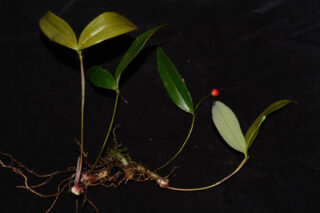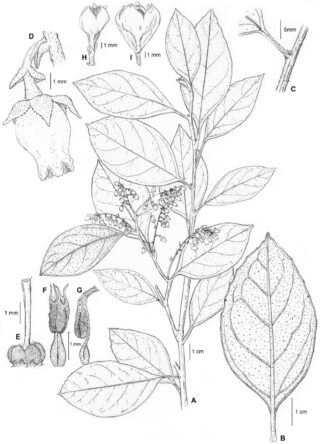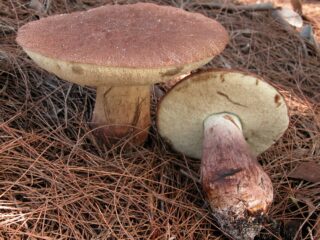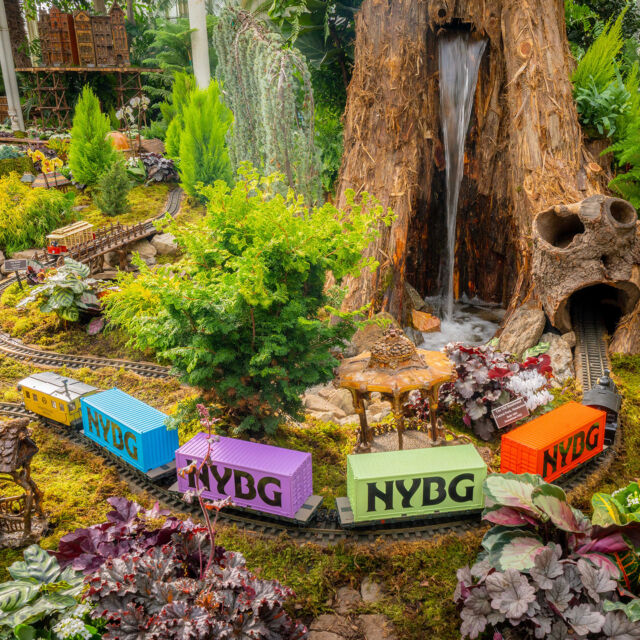NYBG Scientists Discover 22 New Species in 2023: A Crucial Part of Conservation Efforts

“Systematics…directly impacts conservation: we cannot conserve a species if we do not recognize it as distinct and do not have a name for it.” — Matthew C. Pace, Assistant Curator of the William and Lynda Steere Herbarium
Scientists have estimated that there are around 8.7 million species of plants and animals on Earth, but only 1.2 million species have been identified and described, according to National Geographic. That means only about 13.8% of existing species are known—most of these being insects—and there are millions of plants, fungi, and animals left to discover. In the botanical world, scientists are describing hundreds of new plants, algae, fungi, and lichens every year. Newly discovered species are often at a higher risk of extinction—they’re only being discovered now because they’re rare and/or isolated, making them more vulnerable. In many cases, however, these species have received limited conservation effort, according to a 2022 study.
The process involved in naming species is called Systematics, the science of classifying biodiversity. It involves examining the diversity of organisms and their evolutionary relationships through time. In the wake of a changing climate and biodiversity loss, identifying new species is crucial to conservation. It is important to track total biodiversity—as well as how it spreads across the Earth and within each ecosystem—in order to understand the cause and impact of environmental issues. According to Matthew C. Pace, Assistant Curator of the William and Lynda Steere Herbarium, “Systematics…directly impacts conservation: we cannot conserve a species if we do not recognize it as distinct and do not have a name for it.”
In 2023, Science Curators at NYBG described 22 species and 5 genera as new to Western science. You can read more about these fascinating species in Pace’s blog post on The Hand Lens. Many of these species were discovered through the collections of the William and Lynda Steere Herbarium. Researchers used the physical specimens to compare their morphology—or the shapes and structures of an organism, which can be found through studies like measuring the petals of a flower, or the type of hairs on a leaf—and extracted DNA from specimens for identification.

Species and genera (singular: genus) are both ranks within the taxonomic system. A genus is a group of related species. This is all part of Taxonomy—the science of naming, describing, and classifying organisms. There is a hierarchy of classification ranks, starting at the broadest and going toward the most specific:
- Domain
- Kingdom
- Phylum
- Class
- Order
- Family
- Genus
- Species
This ranking helps us understand how organisms are connected throughout history in order to make informed decisions about their conservation and use. The network of life on Earth is complex and requires a deep level of comprehension in order to recognize how threats to one species can cause ripple effects that impact others.

A Phylogeny, or a phylogenetic tree, is the representation of evolutionary history and the relationships between species. Think of a family tree, where the roots indicate the ancestral lineage, the branches indicate organisms, and the location where two branches connect indicates a common ancestor. Therefore, systematics can be thought of as the combination of Taxonomy and Phylogeny—classification plus evolutionary relationships.
Because there are so many species left to discover, some may even be on the brink of being endangered, or even already extinct, without scientists ever knowing they existed. This is why the work of NYBG scientists is so critical, racing to identify species so we can quickly turn our attention to their conservation and survival.
SUBSCRIBE
Enter your email address to subscribe to this blog and receive updates on new posts.











